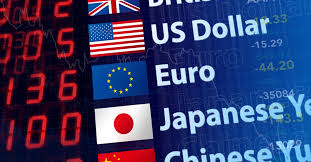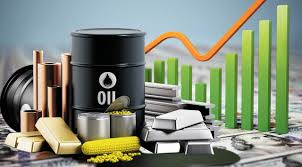📊 Financial markets are complex institutional structures that enable the movement of capital in various forms between participants in the economy. The main actors here are the state, enterprises of all forms of ownership, and private individuals. In other words, the financial market is a global stage where those who need money meet those willing to provide it.
Two main groups of participants
- The first group – borrowers. These are companies, governments, or individuals who need funds to implement projects, enter new markets, cover budget deficits, or simply address current needs. They seek loans, want to insure risks, and aim to integrate into international relations.

- The second group – investors. Their goal is the opposite: to preserve and increase the capital they already have.
Financial markets act as an “intermediary” between these groups, creating conditions under which the interests of both sides are balanced.
Main types of financial markets

Traditionally, economic science distinguishes several key segments:
- Money market
- Debt market
- Stock market
- Foreign exchange market
- Derivatives market
- Commodity market
Each of them has its own specifics, instruments, and objectives, but together they form a single system that allows the economy to function and grow.
Money market – the foundation of the system

The money market can be compared to the circulatory system of the financial economy. Its objects are short-term investments and loans, usually granted for up to one year.
Here, two parameters are crucial:
- Liquidity – how quickly an asset can be converted into cash.
- Risk – the probability of repayment or non-repayment of funds.
The market instantly reacts to the monetary policy of central banks. For example, a decision by the U.S. Federal Reserve to change interest rates immediately affects the cost of loans worldwide.
Example: If the U.S. real estate market starts to decline, banks increase the cost of funding. The higher the risks, the more expensive the credit.
Debt market – the center of the financial pyramid

This segment is also called the capital market. Here, instruments with long-term maturities circulate – bonds, bills, and other debt securities. The use of capital exceeds one year, and the funds may be directed toward investment projects, production modernization, or budget stabilization.
The yield of bonds directly depends on the issuer’s reliability: the higher the risk, the higher the return for the investor. Central banks can artificially lower bond yields through quantitative easing programs, buying “problematic” securities, and keeping companies afloat.
Conclusion: a developed debt market is a sign of a mature economy, without which large infrastructure projects and strategic state initiatives cannot be implemented.
Stock market – the top of the pyramid

The stock market is traditionally at the center of media attention since the shares of the largest corporations are traded here. However, in a macroeconomic sense, its role is less fundamental than that of the money or debt segments.
The main goal of the stock market is to attract capital into business through the issuance of shares. A company sells part of its ownership to investors and, in return, receives funds for development.
The future dynamics of stocks depend on business expectations and prospects: if the company grows, shares rise; if it declines, investors rush to sell them.
Example: The rise in Tesla or Apple shares may reflect not only their actual financial performance but also investors’ expectations about the future of technology.
Foreign exchange market – the global connecting element

Forex, or the foreign exchange market, connects all other segments. Any international transaction – purchasing shares, paying for supplies, lending – requires currency exchange.
If an investor buys shares of a New Zealand company, they need New Zealand dollars. For payments in Europe – euros; for deals with U.S. corporations – U.S. dollars.
Features of the foreign exchange market:
24/7 operation. It works around the clock.
- Huge volumes. Daily turnover amounts to trillions of dollars.
Thus, the foreign exchange market is the foundation of global trade in goods, services, and capital.
Derivatives market – risk management

This includes futures, options, and other derivatives. The main goal here is not so much direct profit as risk hedging. With their help, companies protect themselves from fluctuations in prices, exchange rates, or interest rates.
Example: An airline may fix the fuel price in advance by entering into a futures contract to protect itself from possible oil price increases.
Commodity market – the real sector

This market trades not money or securities but raw materials and goods: oil, gas, gold, grain, metals. Its importance is enormous for both exporting and importing countries.
Commodity prices form the basis for inflation, the trade balance, and the stability of national currencies.
💡 Summary
Financial markets are a complex and interconnected mechanism in which each segment plays its role.
- The money market provides liquidity.
- The debt market creates conditions for long-term investment.
- The stock market mobilizes capital for business.
- The foreign exchange market connects national economies into a global network.
- The derivatives market allows risk hedging.
- The commodity market reflects the balance of power in the real sector.
And only together do they ensure the stability and balance of the entire global financial system.
All content provided on this website (https://wildinwest.com/) -including attachments, links, or referenced materials — is for informative and entertainment purposes only and should not be considered as financial advice. Third-party materials remain the property of their respective owners.


